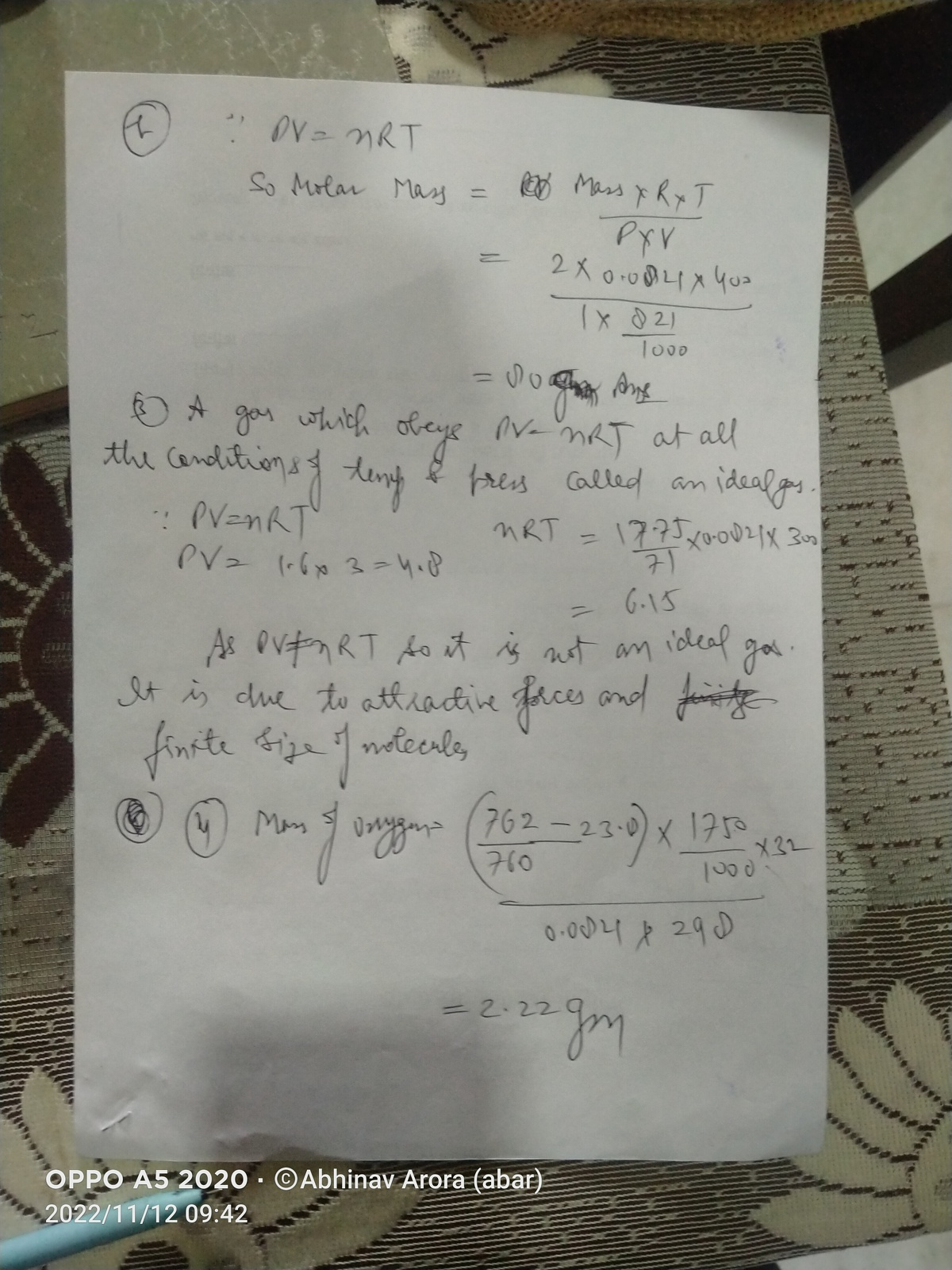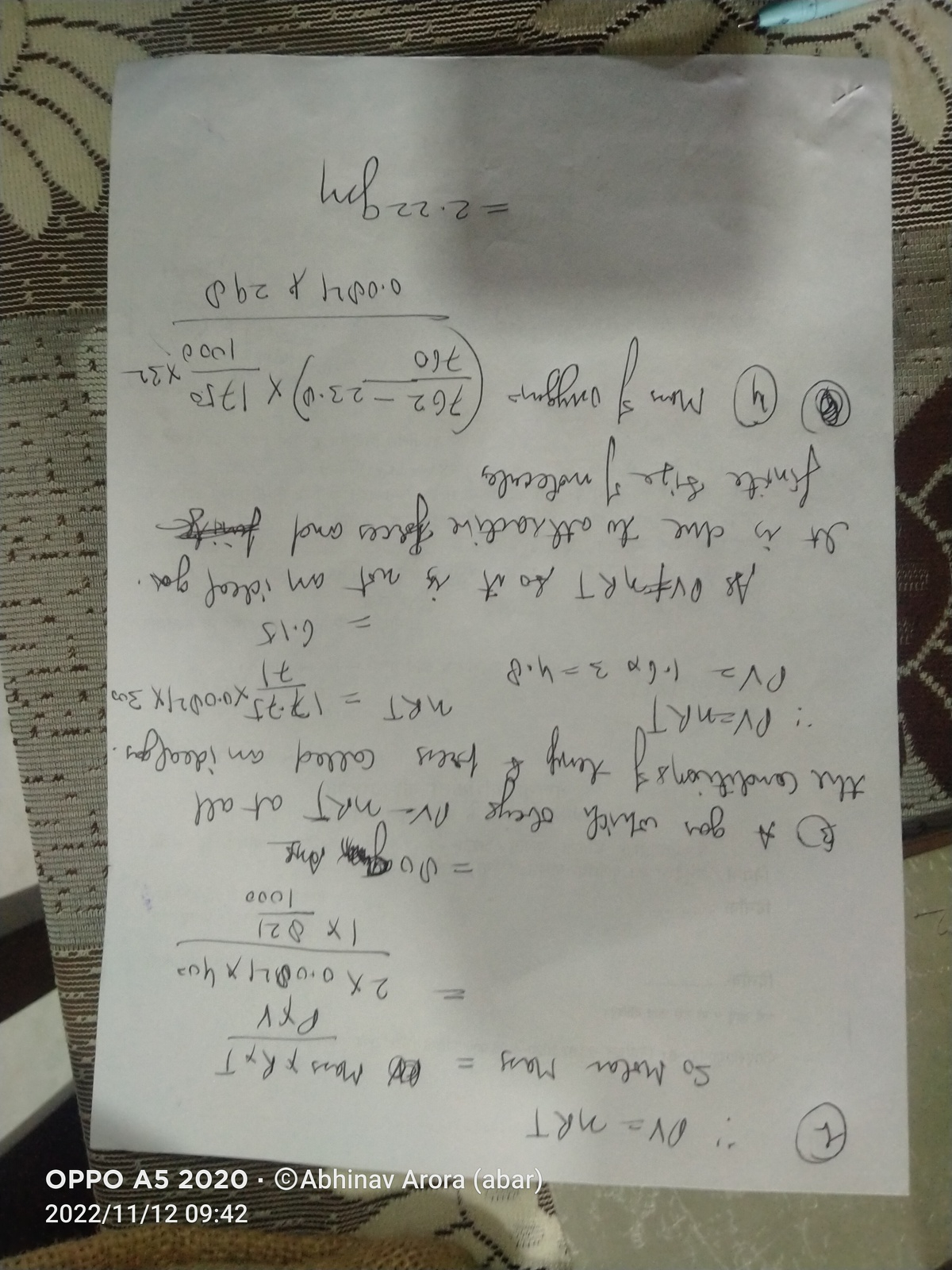Question 3.
What is an ideal gas.
When 17.75 g of Cl2 gas filled into a 3-L closed container at 27 °C, the internal pressure of the container increased to 1.6 atm. Determine whether Cl2 gas behaves as an ideal gas at this condition. State the conditions whaen a gas deviates from an ideal behaviour. Explain your answer.
Question 4.
The decomposition of KClO3 is commonly used to prepare small amounts of O2 in the laboratory. Oxygen gas generated in an experiment is collected at 25 °C in a bottle inverted in a breaker of water. The external laboratory pressure is 762 torr. When the water level in the originally full bottle has fallen to the level in the breaker, the volume of collected gas is 1750 mL. What is the mass of oxygen gas have been collected?
[vapour pressure of water at 25 °C = 23.8 torr]
question 3
Answer:
80 gm, it is not an ideal gas. 2.22 gm oxygen will formStep-by-step explanation:

On applying PV = nRT , mass found to be 80 gm . Mass= 2×0.0821×400/ .821= 80gm ,
As Cl2 does not obey PV= nRT so it is not an ideal gas . It is due to attractive forces and finite size of molecules. On applying PV= nRT , mass of O2= (762-23.8/760)× 1.75×32/0.0821×298= 2.22 gm O2 will form.

